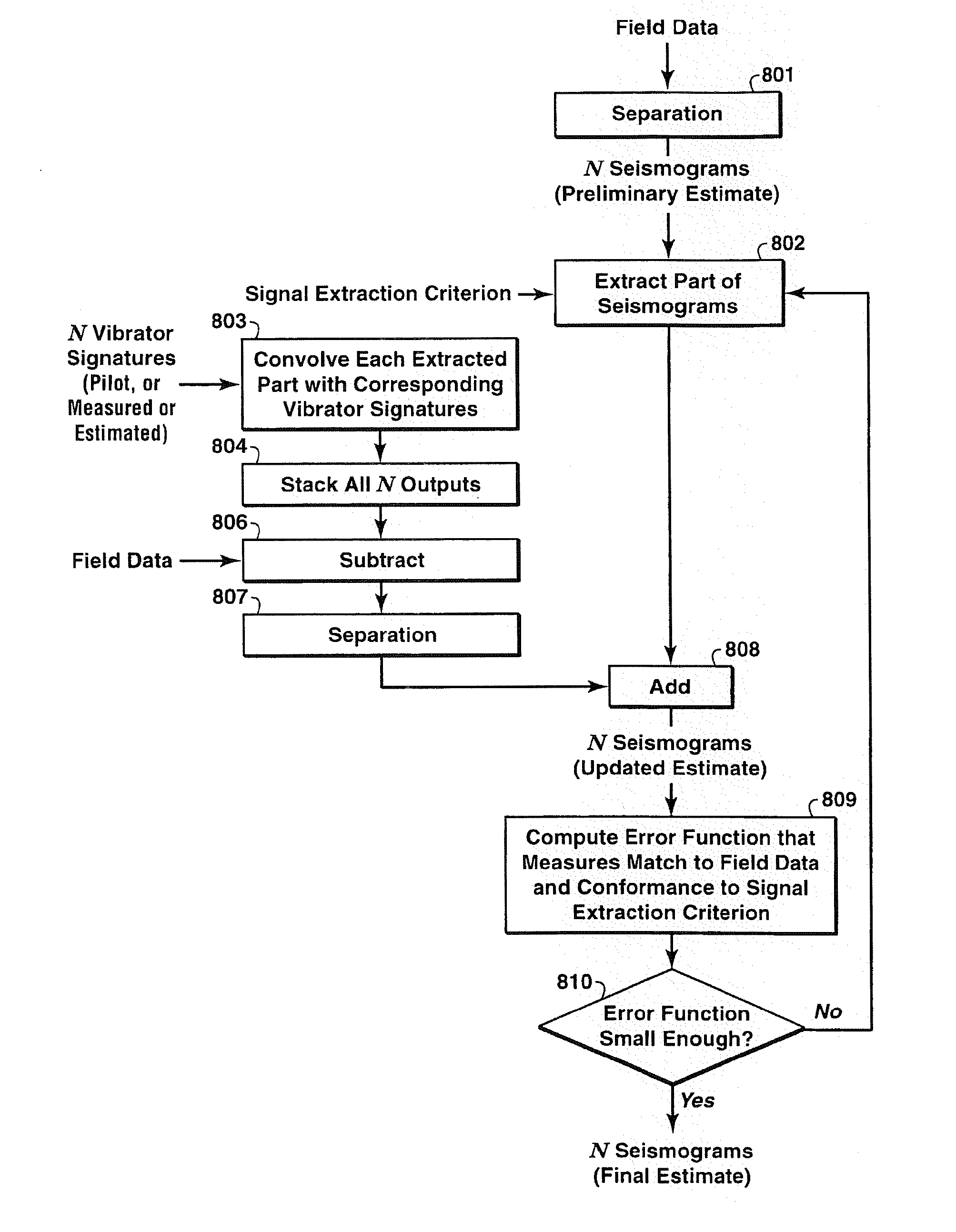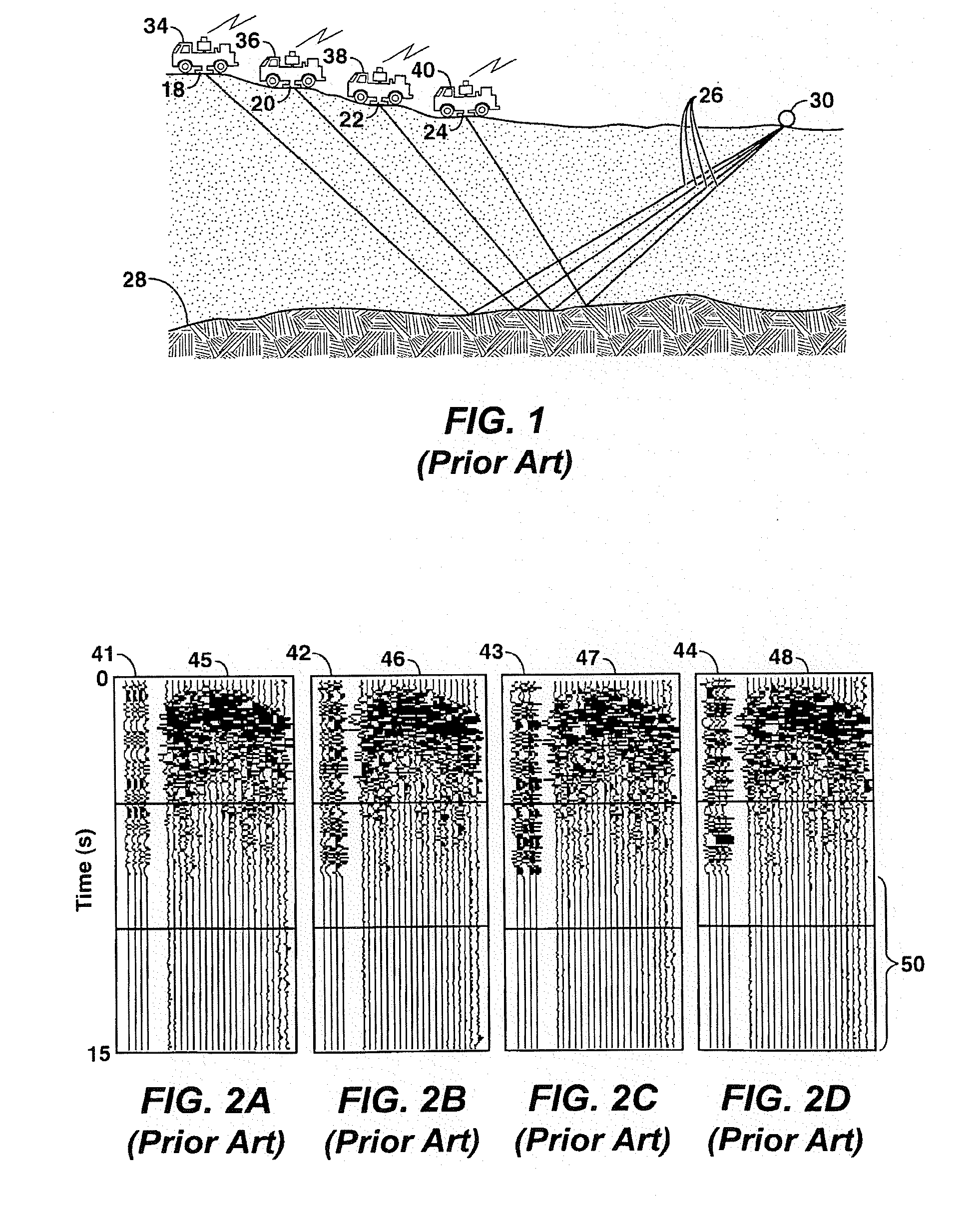Separation and Noise Removal for Multiple Vibratory Source Seismic Data
a seismic data and vibratory source technology, applied in the field of geophysical prospecting, can solve the problems of inability to practice, computer-simulated seismograms also suffer from the interference noise problem, and the seismogram obtained from such acquisition methods is contaminated by more nois
- Summary
- Abstract
- Description
- Claims
- Application Information
AI Technical Summary
Benefits of technology
Problems solved by technology
Method used
Image
Examples
Embodiment Construction
[0054]The present invention is a computer implemented seismic processing method that improves the recovery of individual seismograms from vibroseis surveys in which multiple vibrators are operated at the same time or from computer model simulations in which the response from multiple sources are simulated at the same time. To enable satisfactory separation of the individual responses, each source must be a vibratory source (in contrast to an impulsive source), and must be operated with a different continuous sweep, i.e. each vibrator must have a unique sweep, and for the purposes of the invention (and to save acquisition time and cost) each sweep is continuous. A continuous sweep for purposes herein means a sweep that preferably (from an acquisition cost standpoint) includes no “listen” time, but at least is not interrupted by any dead time interval longer than the two-way travel time of the seismic wave from the vibrator source to the deepest target and back to a receiver. For long...
PUM
 Login to View More
Login to View More Abstract
Description
Claims
Application Information
 Login to View More
Login to View More - R&D
- Intellectual Property
- Life Sciences
- Materials
- Tech Scout
- Unparalleled Data Quality
- Higher Quality Content
- 60% Fewer Hallucinations
Browse by: Latest US Patents, China's latest patents, Technical Efficacy Thesaurus, Application Domain, Technology Topic, Popular Technical Reports.
© 2025 PatSnap. All rights reserved.Legal|Privacy policy|Modern Slavery Act Transparency Statement|Sitemap|About US| Contact US: help@patsnap.com



